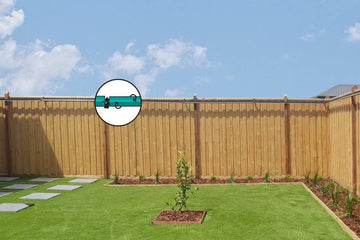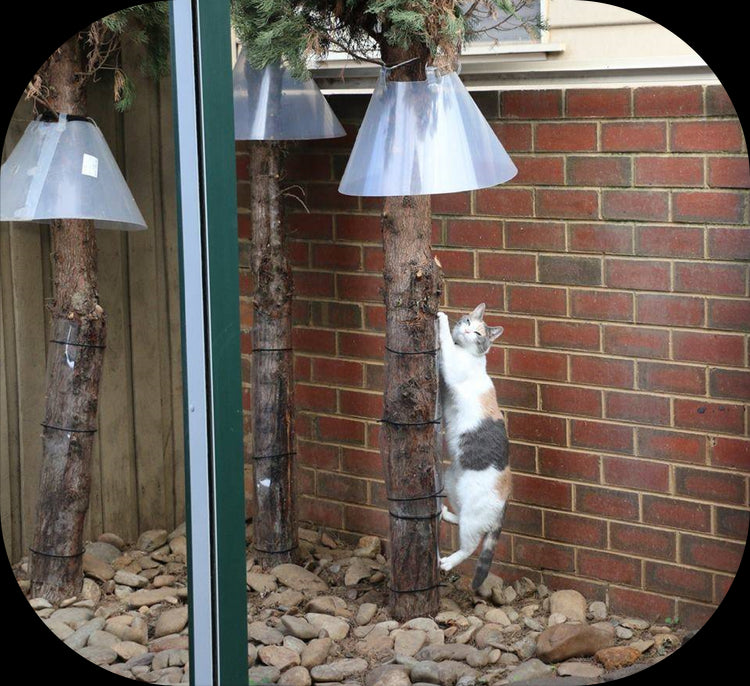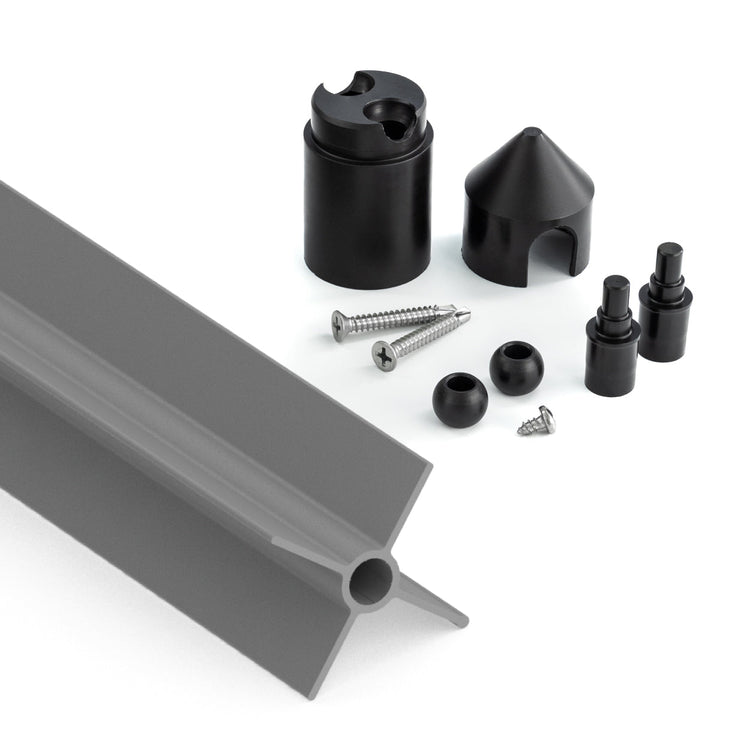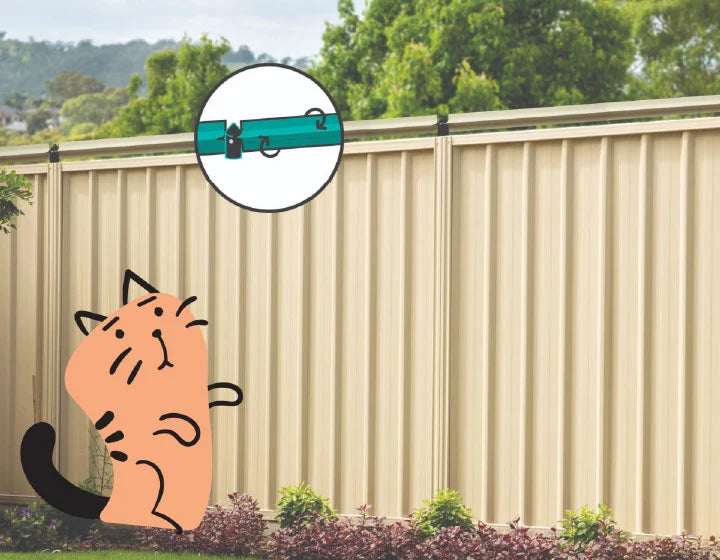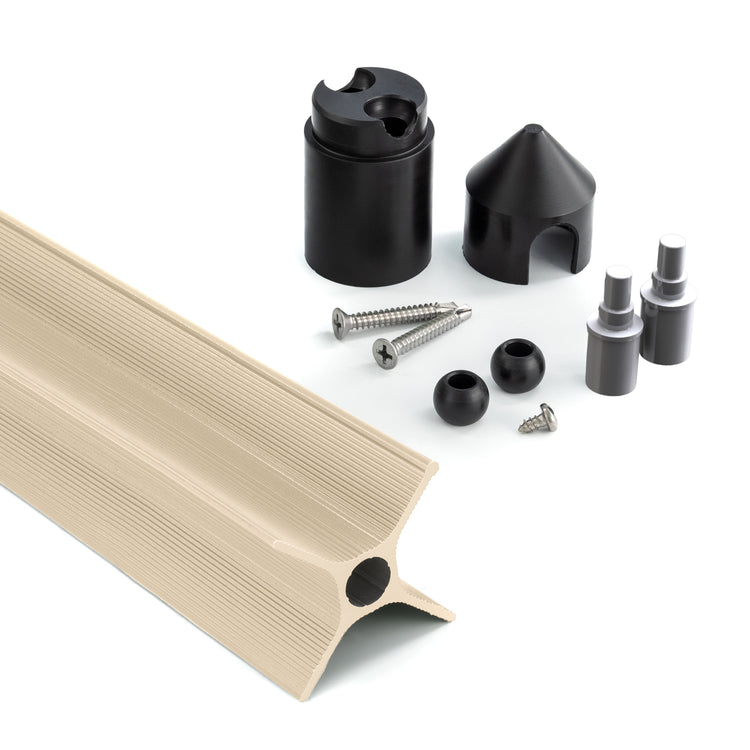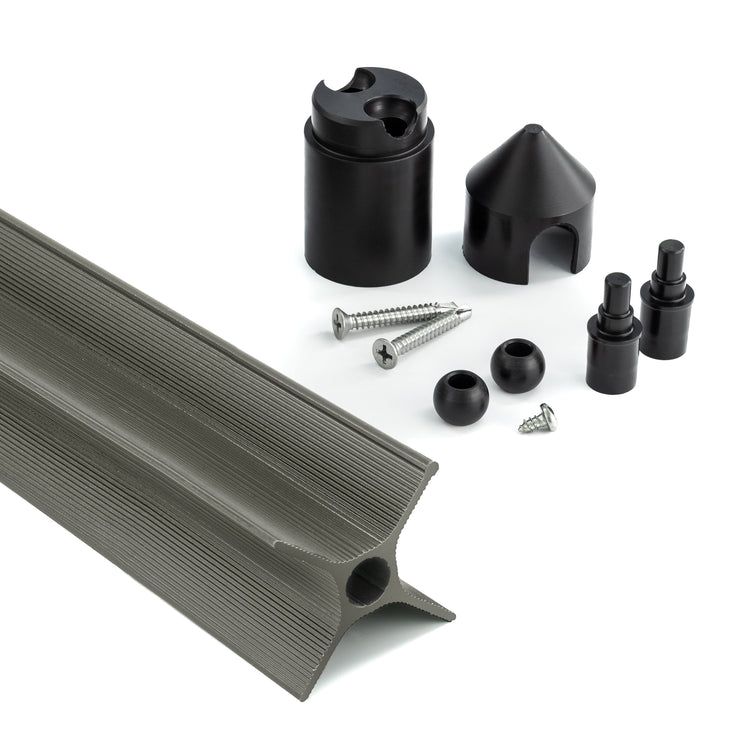How to Craft Quiet, Private Garden Zones for Shy Cat Personalities

Key Takeaways
- Creating secluded garden spaces helps shy cats feel secure while enjoying outdoor time
- Strategic placement of plants and barriers provides natural privacy screens
- Incorporating multiple hiding spots and elevated perches gives cats control over their environment
- Cat-proof fencing prevents escapes while maintaining a sense of freedom
- Quiet zones away from household traffic reduce stress for sensitive felines
- Proper containment systems protect both cats and local wildlife
- Gradual introduction to outdoor spaces builds confidence in timid cats
- Weather-resistant shelters ensure year-round comfort and protection
- Regular monitoring allows for customization based on individual cat preferences
- Well-designed spaces can dramatically improve quality of life for shy felines
Understanding Shy Cat Personalities
Shy or timid cats often struggle with confidence in outdoor environments, making them reluctant to explore even their own backyards. These sensitive felines may have experienced trauma in the past, have naturally reserved temperaments, or simply need more time to adjust to new situations. Creating a secure outdoor space specifically designed for their needs can dramatically improve their quality of life, allowing them to enjoy fresh air and sunshine without overwhelming anxiety. Many shy cats display subtle signs of stress when confronted with new environments, including dilated pupils, flattened ears, and a crouched posture that indicates their discomfort and uncertainty.Unlike their more adventurous counterparts, shy cats benefit from outdoor spaces that offer plenty of cover, minimal disturbances, and predictable environments. Cats with sensory challenges particularly need these thoughtfully designed spaces to help them gradually build confidence while staying protected from overwhelming stimuli. With the right setup, even the most timid cats can develop a newfound appreciation for outdoor exploration. Behavioral experts note that shy cats often become more confident and exhibit fewer stress behaviors when given access to secure outdoor environments tailored to their specific needs, showing that appropriate accommodation can significantly improve their overall wellbeing.
Essential Elements of a Shy Cat-Friendly Garden
Creating a garden space that caters to shy cat personalities requires careful consideration of several key elements. First and foremost, these spaces should provide multiple escape routes and hiding spots, giving cats the security of knowing they can quickly retreat if they feel threatened. Natural barriers like dense shrubs, tall grasses, and carefully positioned planters create both physical and visual protection. Feline behaviorists recommend incorporating at least three distinct hiding locations within even small garden spaces to ensure cats never feel cornered or trapped in unfamiliar territory.Elevated spaces are equally important, as they allow cats to observe their surroundings from a position of safety. Consider installing secure shelves, cat trees designed for outdoor use, or creating dedicated perches on stable structures within your garden. The 16 Foot Cat-Proof Fence Kit at $117.00 and 12 Foot Cat-Proof Fence Kit at $92.00 offer excellent solutions for creating smaller, more manageable secure zones within your garden that can be gradually expanded as your shy cat becomes more comfortable. These modular systems can be configured to work with existing garden features, making them adaptable to nearly any outdoor space while providing essential security for nervous felines.
Noise reduction is another critical consideration. Position your cat's garden space away from loud appliances, busy streets, or areas with frequent human activity. Sound-absorbing features like water fountains can help mask startling noises while providing a calming ambiance that many cats find soothing. Remember that consistency and predictability help shy cats feel secure, so avoid making frequent changes to the environment once you've established a layout that works. Research has shown that cats exposed to unpredictable environments show elevated stress hormones, making environmental stability particularly important for shy individuals who are already prone to anxiety.
Strategic Placement for Maximum Privacy
The location of your shy cat's garden retreat can significantly impact how comfortable they feel using it. Ideally, choose an area that receives partial sun but also offers natural shade throughout the day. Corner spaces against walls or fences work well as they provide built-in security on two sides while requiring less additional fencing to create a fully enclosed area. Feline behavior specialists recommend positioning these spaces where cats can maintain visual contact with familiar territory, such as within sight of a home window, to create a psychological connection between safe indoor spaces and the new outdoor environment.Consider the proximity to household entry points when planning your cat's space. While you want the area to be accessible from your home, placing it directly adjacent to frequently used doors may create too much disturbance for a shy cat. Instead, create a buffer zone or transitional area that allows your cat to gradually move from the safety of indoors to their outdoor sanctuary. The 60 Foot Cat-Proof Fence Kit at $199.99 provides enough coverage to create a substantial private zone while the 80 Foot Cat-Proof Fence Kit at $199.99 allows for even more generous space that can accommodate multiple comfort zones within the same enclosure. These larger systems enable you to create distinct areas within the enclosure that serve different purposes—from sunny lounging spots to densely planted hiding areas—giving shy cats options as their moods and needs change throughout the day.
Privacy from neighbors and passersby is equally important. Position your cat's garden area away from property boundaries where possible, or use tall plantings, trellises with climbing plants, or decorative screens to block sightlines from adjacent properties. This visual privacy helps reduce stimulation and creates a more peaceful environment where shy cats can relax without feeling exposed or watched. Studies of feral cat colonies have shown that cats naturally select resting spots with good visibility of their surroundings but minimal visibility to potential threats, suggesting this balance of seeing without being seen is deeply important to feline security.
Creating Natural Hiding Spots and Pathways
Shy cats thrive in environments that offer plenty of cover and concealment options. Natural hiding spots not only provide security but also create enriching spaces for exploration. Dense shrubs with space underneath for cats to retreat make excellent hiding areas, as do hollow logs, repurposed planters turned on their sides, and specially designed cat houses with multiple entry points. Veterinary behaviorists emphasize that the quality of hiding spots matters as much as quantity—ideal hiding places should offer protection from above and behind while allowing cats to maintain visual awareness of their surroundings, creating what experts call "protected vantage points."Creating connected pathways through the garden gives shy cats the ability to move through the space without feeling exposed. These can be formed using stepping stones placed under overhanging plants, tunnels made from flexible garden materials, or even dedicated cat walkways elevated off the ground. The Cat-Proof Tree Guard at $29.99 can help incorporate existing trees into your cat's safe zone, while the 4 Foot Cat-Proof Fence Kit at $42.00 is perfect for creating smaller protected pathways between hiding spots. These modular components allow you to work with your garden's natural features, transforming them into cat-friendly elements that enhance both security and enrichment opportunities.
When designing these pathways, think like a cat—they prefer routes that offer overhead cover and multiple escape options. Avoid creating dead ends where a shy cat might feel trapped if startled. Instead, ensure each area connects to at least two others, allowing for circular movement through the space. This network approach gives cats confidence to explore further, knowing they always have a clear path back to safety. Research into feline spatial cognition has shown that cats mentally map their territories based on connected pathways and key landmarks, making a well-designed network of routes essential for helping shy cats develop confidence in navigating their outdoor space.
Selecting Cat-Friendly Plants for Privacy and Comfort
The right plant selection can transform your garden into a feline paradise while providing natural privacy screens. When choosing plants for a shy cat's garden, prioritize non-toxic varieties that offer different textures, heights, and densities. Cat grass, catnip, catmint, and valerian can all be safely included to provide sensory enrichment, while taller ornamental grasses create visual barriers and satisfying rustling sounds that many cats enjoy. Horticultural experts recommend selecting plants with varying bloom times to maintain visual interest and coverage throughout the growing season, ensuring your garden provides consistent privacy year-round.Layered plantings work best for creating depth and multiple hiding opportunities. Start with taller plants at the back of borders, then add mid-height shrubs and finally ground covers. This approach not only looks aesthetically pleasing but creates the kind of complex environment that cats find stimulating yet secure. Innovative pet fencing solutions can be integrated with your plantings to create a harmonious blend of security and natural beauty. The strategic placement of these containment systems among carefully selected plantings allows you to create a garden that appears naturalistic while still providing the necessary boundaries to keep your shy cat safe.
Be vigilant about avoiding toxic plants, as many common garden varieties can be harmful to cats. Lilies, foxglove, azaleas, and daffodils are particularly dangerous and should never be included in a cat's garden space. Instead, opt for pet-safe alternatives like sunflowers, zinnias, petunias, and marigolds to add color without risk. The ASPCA maintains a comprehensive list of plants that are toxic to cats, which is worth consulting before making any new additions to your garden. Veterinary toxicologists warn that even mild toxicity can be problematic for shy cats, as negative experiences in their outdoor space can create lasting aversions that undermine their confidence and willingness to explore.
Secure Fencing Solutions for Shy Cats
Effective containment is essential for creating a truly safe outdoor experience for shy cats. Unlike more confident felines who might attempt to climb or jump traditional fences, shy cats typically prefer to stay within familiar territory once they feel secure. However, proper fencing still plays a crucial role in keeping them protected from outside threats and preventing accidental escapes during moments of panic. Animal behaviorists note that even the most timid cats may bolt when startled by unfamiliar stimuli, making reliable containment a non-negotiable aspect of any outdoor cat space.The 300 Foot Cat-Proof Fence Kit at $299.99 provides comprehensive coverage for larger properties, while the 200 Foot Cat-Proof Fence Kit is ideal for standard suburban yards. These systems use specially designed paddles that create an overhang cats cannot climb past, effectively keeping them within the boundaries without creating an intimidating or prison-like appearance. The innovative design works with a cat's natural climbing behavior, gently preventing escape without causing distress or creating negative associations with the outdoor space.
When installing cat-proof fencing, pay special attention to potential escape routes like trees near fence lines, gaps under gates, or utility access points. The goal is to create a completely secure perimeter that gives you peace of mind while allowing your shy cat to gradually build confidence in their outdoor environment. Remember that shy cats often take longer to test boundaries than their more adventurous counterparts, but proper containment from the start prevents potentially traumatic escapes that could set back their progress. Security experts recommend regular inspections of your containment system, as even small compromises can lead to escape opportunities that might not be immediately apparent to human observers.
Noise Reduction Strategies for Sensitive Felines
Loud or sudden noises can be particularly distressing for shy cats, triggering their fight-or-flight response and potentially causing them to avoid outdoor spaces altogether. Creating acoustic buffers around your cat's garden retreat helps minimize these disruptions and creates a more consistently peaceful environment. Acoustic research has shown that cats' hearing is significantly more sensitive than humans', particularly to high-frequency sounds, making noise management an essential consideration when designing spaces for sensitive felines.Dense evergreen hedges serve dual purposes as both visual screens and sound barriers. Position these along property lines adjacent to busy streets or noisy neighbors. Water features like small fountains or bubbling birdbaths create white noise that helps mask sudden sounds while adding sensory enrichment to the space. Protecting older cats outdoors often involves similar noise reduction strategies, as senior felines frequently develop increased sensitivity to auditory stimulation. Environmental psychologists note that consistent background sounds can actually help shy cats acclimate to outdoor environments by providing predictable auditory patterns that make sudden noises less jarring.
Consider the timing of potentially disruptive activities around your property. Schedule lawn mowing, power tool use, or other noisy maintenance during times when your shy cat is typically indoors. The 8 Foot Cat-Proof Fence Kit at $67.00 can be used to create a smaller, more controlled environment that's easier to keep peaceful, allowing your cat to gradually acclimate to outdoor sounds from a secure base. This smaller containment area can serve as an initial introduction zone before expanding to larger spaces, giving shy cats time to adjust to outdoor stimuli in manageable increments.
Wind chimes, while pleasant to human ears, can create unpredictable sounds that may startle shy cats. If you enjoy these decorative elements, place them well away from your cat's primary retreat areas. Similarly, be mindful of outdoor speakers or entertainment systems that might create sudden volume changes or bass vibrations that cats find unsettling. Acoustic consultants recommend maintaining at least 20 feet between potential noise sources and dedicated cat spaces to minimize stress-inducing sound levels.
Comfortable Resting Areas for Relaxation
Providing multiple comfortable resting spots throughout your cat's garden encourages them to spend more time outdoors and fully enjoy the space. These areas should offer different microclimates—some in dappled shade, others in full sun for warmth-loving cats, and some in complete shade for hot summer days. This variety allows your shy cat to select the perfect spot based on weather conditions and their comfort preferences. Feline comfort experts recommend including at least one resting spot for every 50 square feet of cat-accessible space to ensure your shy cat always has a convenient place to relax without having to venture too far from security.Elevated resting platforms give shy cats the security of height while allowing them to survey their surroundings. These can be as simple as weather-resistant shelves mounted to fence posts or as elaborate as custom-built cat towers designed for outdoor use. The key is ensuring they're stable, offer good visibility, and are positioned to allow easy escape routes if your cat feels threatened. Cat-proof fence kits can be customized to incorporate these resting spots into your overall containment system. Behavioral studies have shown that cats typically spend 50-60% of their time resting, making comfortable, strategically placed resting areas essential components of any cat-friendly outdoor space.
Weather-resistant cat beds or cushions add comfort to these spaces, though they should be brought indoors during inclement weather. Many shy cats appreciate enclosed resting areas like outdoor cat houses with multiple exit points, which provide both physical and psychological security. The 40 Foot Cat-Proof Fence Kit at $301.00 offers an excellent foundation for creating a modest-sized retreat with several distinct resting zones. Materials specialists recommend selecting outdoor fabrics and cushions treated with UV protectants and antimicrobial finishes to ensure durability and hygiene in all weather conditions, with regular cleaning to prevent the buildup of allergens that might irritate sensitive cats.
Gradual Introduction to Outdoor Spaces
Shy cats often need time to adjust to new environments, and rushing the process can create negative associations that are difficult to overcome. A gradual introduction to outdoor spaces allows your cat to build confidence at their own pace while establishing positive connections with the garden retreat you've created. Feline behaviorists recommend a minimum adjustment period of 2-3 weeks for particularly shy cats, with some individuals potentially requiring several months to fully acclimate to new outdoor environments.Begin by allowing your cat to observe the outdoor space from a secure indoor vantage point, such as through a window or glass door. Next, consider short, supervised visits during quiet times of day when disruptions are minimal. Sit calmly with your cat, offering gentle reassurance without forcing exploration. Treats, favorite toys, or even a sprinkle of catnip can create positive associations with the new environment. Discovering innovative pet fencing solutions can help you create the perfect setup for this gradual introduction process. These containment systems can be installed in phases, allowing you to start with a smaller, more manageable space before expanding to encompass larger areas as your cat's confidence grows.
As your cat becomes more comfortable, gradually increase the duration of outdoor sessions while maintaining supervision. Watch for signs of stress like flattened ears, dilated pupils, or crouching close to the ground, which indicate it's time to return indoors. Each cat will progress at their own pace—some may take days to adjust while others might need weeks or even months. Spare parts for your containment system allow you to adjust and expand the secure area as your cat's confidence grows. Animal behaviorists recommend maintaining a consistent schedule for outdoor access, as predictable routines help shy cats develop confidence more quickly than sporadic or unpredictable outdoor opportunities.
Protecting Against Wildlife Encounters
While your shy cat may be reluctant to approach wildlife, unexpected encounters with other animals can be extremely stressful and potentially dangerous. Creating barriers that prevent wildlife from entering your cat's garden retreat helps maintain the peaceful environment necessary for shy cats to feel secure outdoors. Wildlife biologists note that even in urban environments, cats may encounter a surprising variety of wild animals, from common species like squirrels and birds to potential predators like coyotes in suburban areas.Complete enclosure systems provide the most comprehensive protection, creating a physical barrier that keeps both your cat in and other animals out. Coyote rollers can be incorporated into your fencing design to prevent predators from climbing into your cat's space. These rolling bars make it impossible for animals to gain the grip needed to scale fences, providing an additional layer of security. Wildlife management experts recommend these systems particularly for properties adjacent to natural areas or in regions with known predator populations.
Be mindful of smaller wildlife that might dig under fencing. Extending fence material below ground level or adding a buried barrier of hardware cloth can prevent determined diggers from accessing your cat's sanctuary. Similarly, ensure any gates have secure latches and close properly to eliminate gaps that might allow entry. Professional installers recommend burying barrier materials at least 8-12 inches below ground level and angling them outward to discourage digging animals effectively.
Bird feeders, while enjoyable for humans, can attract wildlife that might stress shy cats. If you choose to include these features, position them well away from your cat's primary retreat areas to minimize potential conflicts. Remember that the goal is to create a predictable, controlled environment where your shy cat can gradually build confidence without unexpected disruptions. Ecological consultants suggest maintaining at least 30 feet between wildlife-attracting features and dedicated cat spaces to reduce the likelihood of stressful encounters.
Seasonal Considerations for Year-Round Comfort
Creating a garden retreat that your shy cat can enjoy throughout the year requires planning for seasonal changes. In the United States, weather conditions vary dramatically by region, from the snowy winters of the Northeast to the scorching summers of the Southwest. Adapting your cat's outdoor space to address these seasonal challenges ensures they can continue to benefit from outdoor access regardless of weather conditions. Climate adaptation experts recommend designing with your specific regional weather patterns in mind, focusing on the most extreme conditions your area typically experiences.For winter months, provide insulated shelter options that protect from wind, rain, and snow. These can be as simple as waterproof cat houses with thick bedding or more elaborate heated outdoor shelters. Position these shelters to catch winter sun while blocking prevailing winds. The 300 Foot Cat-Proof Fence Kit uses weather-resistant materials designed to withstand all seasons, while the Cat Tree Guard helps incorporate natural shade from trees during hot summer months. Veterinary experts recommend shelters with floors raised at least 2-3 inches off the ground to prevent cold transfer, with entrances positioned away from prevailing wind directions to minimize drafts.
During summer, adequate shade becomes essential to prevent overheating. Create multiple shaded areas using pergolas, shade sails, or natural tree canopies. Access to fresh water is crucial year-round but especially during hot weather—consider a circulating water fountain that prevents freezing in winter and keeps water fresh in summer. Some shy cats may be reluctant to drink outdoors at first, so maintain indoor water sources as well until they become fully comfortable in their garden space. Heat management specialists recommend ensuring that at least 50% of your cat's outdoor area remains shaded during the hottest part of the day, with water stations positioned in cooler locations to prevent rapid evaporation and warming.
Monitoring and Adjusting Your Cat's Garden Retreat
Even the most thoughtfully designed garden retreat may need adjustments based on your individual cat's preferences and behaviors. Observing how your shy cat interacts with the space provides valuable insights that allow you to refine the environment to better meet their needs. Animal behavior specialists recommend maintaining a simple observation journal during the first few months, noting which areas your cat uses most frequently and which they avoid, to identify patterns that can guide improvements.Consider using a pet camera to monitor your cat's behavior when you're not present. This can reveal preferred resting spots, routes through the garden, or areas they avoid, helping you make informed adjustments. The modular nature of systems like the 16 Foot Cat-Proof Fence Kit and 60 Foot Cat-Proof Fence Kit allows for easy reconfiguration as you learn more about your cat's preferences. Technology experts recommend weatherproof cameras with motion detection and night vision capabilities to capture your cat's activities throughout the day and night, providing comprehensive data about how they use the space.
Pay attention to how weather conditions affect your cat's use of the space. You may notice they avoid certain areas during particular times of day due to sun exposure, wind patterns, or noise levels that vary throughout the day. Adding additional shelter, shade, or privacy screens can address these issues and make the entire space more consistently comfortable. Meteorologists note that even mild weather variations can significantly impact cats' comfort, with many felines being particularly sensitive to changes in barometric pressure that often precede storms.
Regular maintenance is essential for both safety and appeal. Check fencing components for damage, trim plants to maintain appropriate hiding spots without creating escape routes, and refresh bedding in shelters to keep them inviting. This ongoing care ensures your shy cat's garden retreat remains a safe, comfortable environment that continues to meet their needs as they grow in confidence. Landscape professionals recommend establishing a seasonal maintenance schedule that includes monthly inspections of all containment components and quarterly assessments of plantings to ensure they continue to provide appropriate coverage and safety.
Conclusion: A Sanctuary for Shy Feline Souls
Creating a quiet, private garden zone for shy cat personalities represents a meaningful investment in your feline companion's physical and emotional wellbeing. These thoughtfully designed spaces allow timid cats to experience the enrichment of the outdoors while remaining protected from overwhelming stimuli and potential dangers. With patience and careful planning, even the most reserved cats can develop newfound confidence as they explore their secure garden sanctuary.The key elements—strategic placement, natural hiding spots, appropriate plant selection, secure fencing, noise reduction, comfortable resting areas, and protection from wildlife—work together to create an environment tailored to the unique needs of shy cats. Systems like those offered by Oscillot America provide the foundation for these specialized retreats, with options ranging from small starter kits to comprehensive solutions for larger properties.
Remember that each shy cat will adapt to outdoor spaces at their own pace. Some may quickly embrace the freedom of a secure garden, while others might take months to fully explore their new territory. By respecting their individual timeline and continuing to refine the environment based on their preferences, you create not just a physical space but a journey toward greater confidence and enrichment for your sensitive feline friend.




